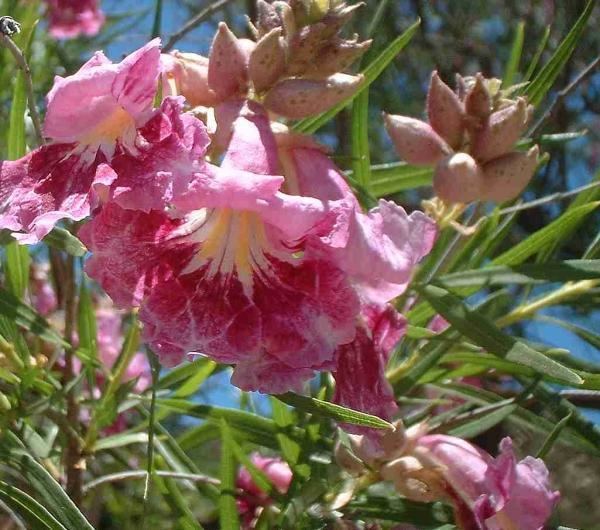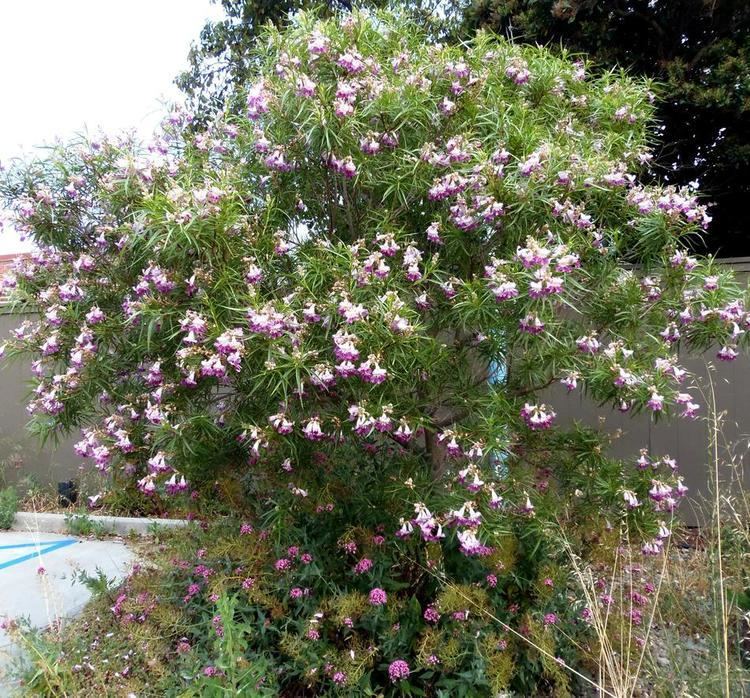Kingdom Plantae Family Bignoniaceae Species C. linearis Higher classification Tecomeae | Order Lamiales Tribe Tecomeae Scientific name Chilopsis Rank Genus | |
 | ||
Similar × Chitalpa, Bignoniaceae, Parkinsonia, Parkinsonia florida, Senegalia greggii | ||
Desert willow chilopsis linearis lisa s landscape design plant pick of the day lisa lapaso
Chilopsis is a monotypic genus of flowering plants containing the single species Chilopsis linearis.
Contents
- Desert willow chilopsis linearis lisa s landscape design plant pick of the day lisa lapaso
- Chilopsis linearis desert willow desert catalpa
- Description
- Cultivation and uses
- References
It is a shrub or tree native to the southwestern United States and Mexico. The common name is desert willow or desert-willow because of its willow-like leaves, but it is a member of the catalpa family, Bignoniaceae. It is commonly seen in washes and along riverbanks at elevations below 1800m in its range.

Chilopsis linearis desert willow desert catalpa
Description

Ranging from 1.5 to as much as 8 meters in height, it can take the form of a shrub or small tree. The linear, curved, deciduous leaves are 10 to 26 cm long and just a few millimeters wide.

The generic name is derived from the Greek words χεῖλος, (cheilos), meaning "lip," and ὄψις (opsis), meaning "resembling," referring to the flowers. They occur in a terminal panicle or raceme, blooming in May through September. About two to four flowers at a time are open in each inflorescence. The calyx is about 8–14 mm, slightly inflated, and varying shades of purple, while the corolla is 2–5 cm, and with colors ranging from lavender to light pink. The throat and lower lip has a pattern of yellow ridges and purple lines, and the margins are crinkled. It is pollinated primarily by large bees in the family Apidae, such as carpenter bees, bumblebees, Anthophora, and Centris. The fruit is a linear pod up to 35 cm long, containing numerous winged seeds.
There are two subspecies:
Cultivation and uses

It is cultivated for its large, showy flowers, and tolerance of hot, dry climates. Although the natural growth is a very irregular shape, it can be readily pruned into a conventional tree shape. A number of cultivars have been selected. Some, such as 'Rio Salado', have dark purple or magenta flowers.
Chilopsis may survive temperatures as low as 10 degrees F (-12 °C).

Chilopsis is closely related to the genus Catalpa and hybrids can be made between the two genera. The nothogeneric hybrid between Chilopsis linearis and Catalpa bignonioides has been named ×Chitalpa tashkentensis. It originated in a botanic garden at Tashkent in Uzbekistan.

Parts of the plant have been used in traditional medicine. It has been used to treat fungal infections such as candidiasis and athlete's foot, as well as wounds and cough.
The wood was used to make bows and baskets.

